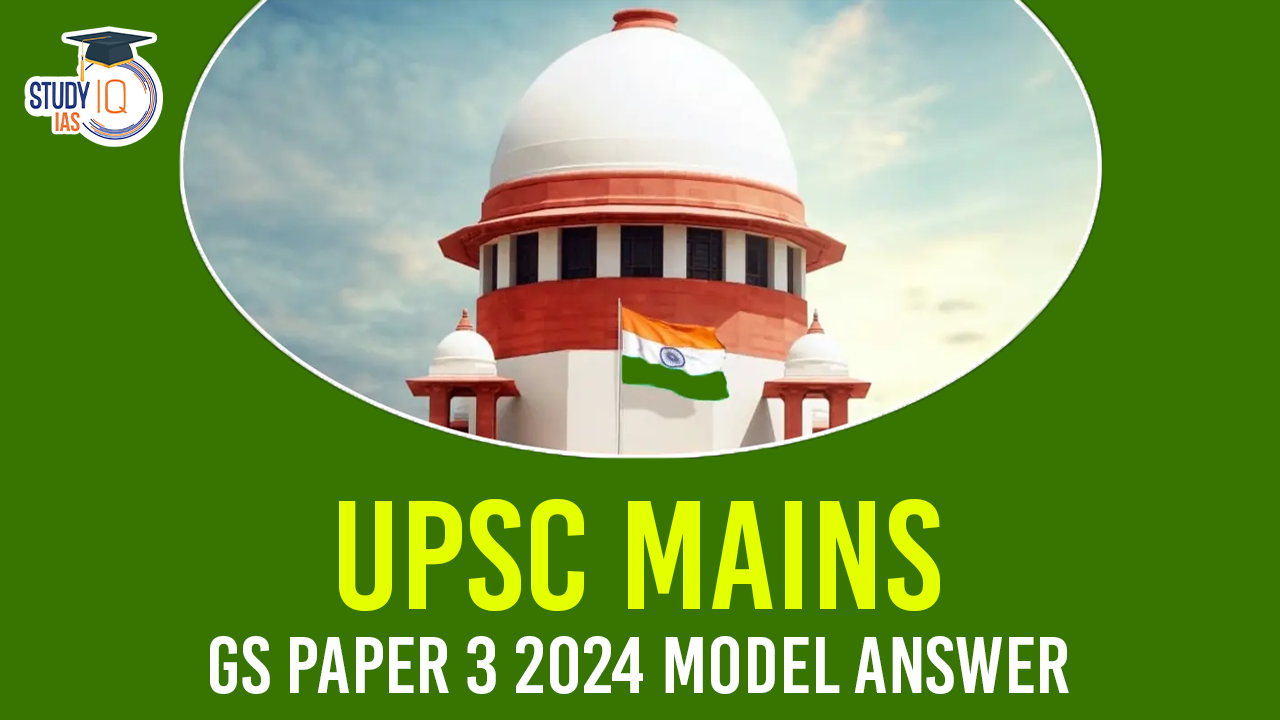Table of Contents
Introduction
- Mention that industrial pollution is a critical environmental challenge-impacting water quality, human health, and biodiversity.
- Highlight that, especially in urban and peri-urban areas, addressing this challenge is critical to ensuring sustainable water resources and ecosystem health
Body
Extent of the Issue-Examples
- River Ganga: According to the Central Pollution Control Board (CPCB), Gross polluting industries (such as tanneries, chemical plants around cities like discharge about 411.25 million litres per day wastewater having pollution load of 27.71 tonnes per day in terms of BOD.
- River Yamuna: 44 million litres of industrial effluents are discharged daily into the river→Chemical and textile industries around Delhi, Haryana, and Uttar Pradesh
- River Sabarmati: According to GPCB, Industrial effluent (from textile, chemical, and dye industries) around 120.88 MLD is discharged into the river every day.
Mitigation Measures for Industrial Pollution of River Water in India
- Effluent Treatment Plants (ETPs): Industries are mandated to set up Effluent Treatment Plants (ETPs) to treat wastewater before discharging it into rivers. These plants help in removing harmful chemicals, heavy metals, and other pollutants.
- Example: The Kanpur Tanneries have been ordered to install ETPs.
- Common Effluent Treatment Plants (CETPs): For small and medium-scale industries, the government promotes the use of Common Effluent Treatment Plants (CETPs). These plants collectively treat effluents from multiple industries, making it more cost-effective for smaller businesses to comply with environmental regulations.
- Example: Ankleshwar Industrial Estate in Gujarat has implemented CETPs to handle effluent.
- Zero Liquid Discharge (ZLD) Policy: The government encourages industries to adopt the Zero Liquid Discharge (ZLD) policy, where wastewater is treated and reused within the industry, ensuring no liquid waste is released into rivers.
- Example: The textile industry in Tiruppur, Tamil Nadu, has adopted ZLD practices to prevent pollution in the Noyyal River.
- Green Technology and Innovation: Industries are encouraged to adopt cleaner technologies and processes that minimize waste generation and pollution.
- Example: The National Mission for Clean Ganga (NMCG) promotes the use of bioremediation and other green technologies for river water clean-up and pollution prevention.
Government Initiatives
- Namami Gange Programme: Launched in 2014, this flagship program aims to clean and rejuvenate the Ganga River by reducing industrial pollution, establishing sewage treatment plants, and promoting community participation.
- National River Conservation Plan (NRCP): It focuses on pollution abatement in major rivers by improving sewage treatment, regulating industrial effluents, and promoting sustainable practices.
- Clean Ganga Fund: This initiative allows individuals, companies, and organizations to contribute to the cleaning and conservation of the Ganga River. The fund is used for various projects, including industrial pollution control.
- India Water Resources Information System (WRIS): The government uses WRIS to track and monitor river water quality across the country. The system collects data on industrial discharge and helps identify pollution hotspots.
- Pollution Control Boards (PCBs): The Central and State Pollution Control Boards regularly monitor and regulate industrial discharge to ensure compliance with environmental laws.
- Penalties and Stringent Laws: The government enforces strict penalties and legal actions against industries that violate pollution control norms, under laws like the Water (Prevention and Control of Pollution) Act, 1974.
- Example: Industries in the Patancheru Industrial Area in Telangana have faced penalties and shutdowns for discharging untreated effluents into the Musi River.
Conclusion
- You can conclude, highlighting the need for stronger enforcement and technological upgrades to tackle industrial pollution of rivers.
- Can add international best practice-Denmark’s wastewater treatment model, where stringent regulations and advanced treatment technologies ensure that wastewater from industries is fully treated before discharge.


 NCERT Books for UPSC Preparation, Check ...
NCERT Books for UPSC Preparation, Check ...
 UPSC Syllabus 2025, Check UPSC CSE Sylla...
UPSC Syllabus 2025, Check UPSC CSE Sylla...
 UPSC Mains Syllabus 2025, Optional Sylla...
UPSC Mains Syllabus 2025, Optional Sylla...





















